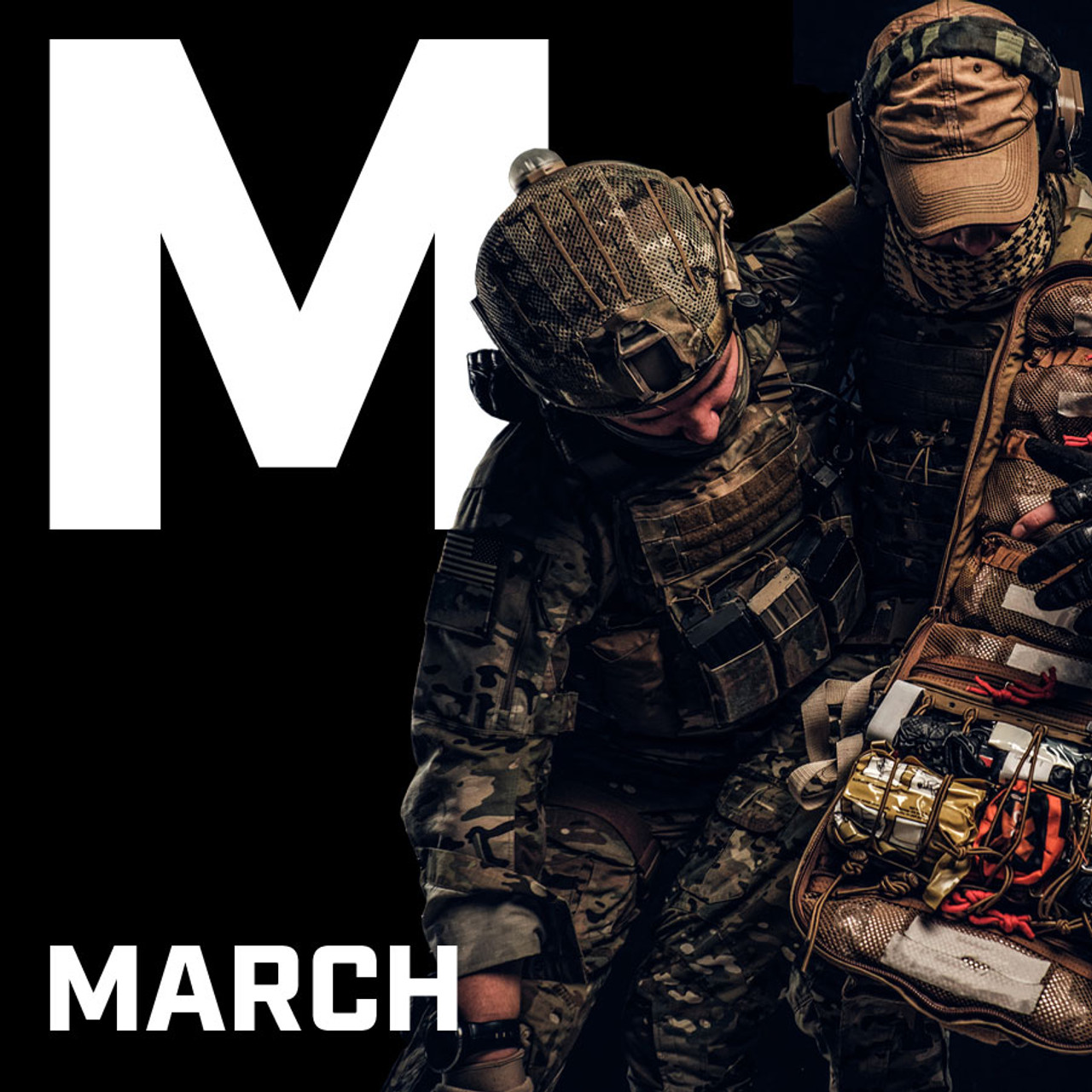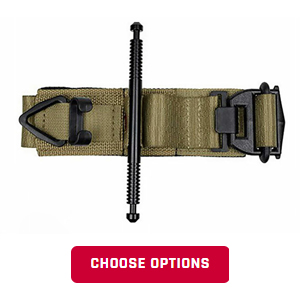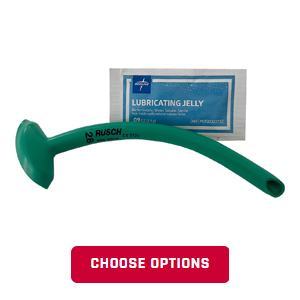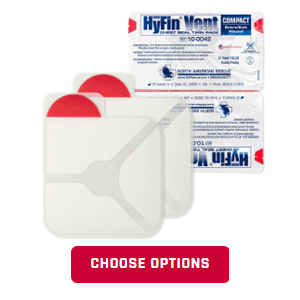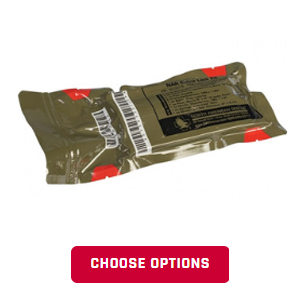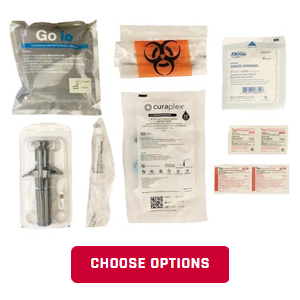MARCH (massive hemorrhage, airway, respirations, circulation, head injury/hypothermia) is an acronym used by TCCC-trained individuals to help remember the proper order of treatment.
Here is a summary of the MARCH acronym, taken from the Tactical Combat Casualty Care Handbook, Version 5. Click here to read more.

The number one potentially survivable cause of death at the POI is hemorrhage from a compressible wound or any life-threatening extremity bleed. More than 90 percent of 4,596 combat deaths post 11 September 2001 died of hemorrhage-associated injuries. The hasty application of a Committee on Tactical Combat Casualty Care (CoTCCC)-approved tourniquet is the recommended management for all life-threatening extremity hemorrhages during care under fire (see page 4). It is initially placed over clothing, high and tight. The deliberate application of a tourniquet is addressed when behind cover and during tactical field care to ensure proper hemorrhage control. The tourniquet is placed under clothing 2 to 3 inches above the wound. The application time is written on the tourniquet. Hemostatic dressings such as Quikclot or Celox are also proven aids in staunching severe bleeding quickly.
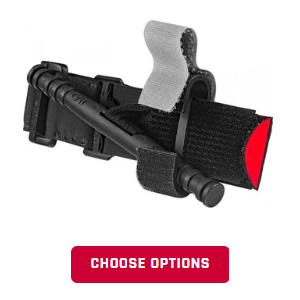 | 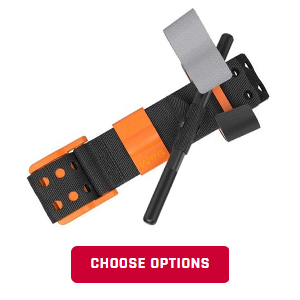 | |
| Combat Application Tourniquet (CAT) | SOF Tourniquet | SAM XT Tourniquet |
Shop all tourniquets: https://www.rescue-essentials.com/tourniquets/

A second survivable cause of death at the POI is a non-patent (closed) airway. Airway injuries typically occur from maxillofacial trauma or inhalation burns. A conscious and speaking casualty has a patent open airway. An unconscious casualty who is breathing can benefit from the nasopharyngeal airway (NPA). An unconscious casualty who is not breathing may require a definitive airway such as a surgical cricothyroidotomy. In a combat setting, endotracheal intubation is highly difficult, if not impossible.
Shop all airway components: https://www.rescue-essentials.com/airway-02-delive...

After massive hemorrhage and closed airway, the third potentially survivable cause of death on the battlefield is the development of a tension pneumothorax (PTX). Air trapped in the chest cavity begins to displace functional lung tissue and places pressure on the heart, resulting in cardiac arrest. Seal open chest wounds with a vented chest seal, decompress a suspected PTX, and support ventilation/oxygenation, as required. Treat a PTX via needle chest decompression (NCD) using a 14-gauge, 3.25-inch-long needle with a catheter.
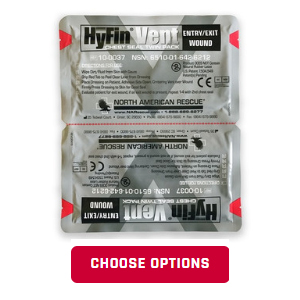 | 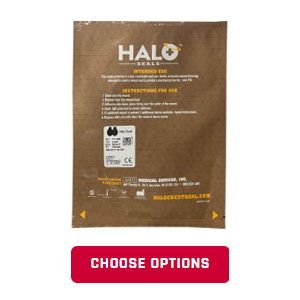 | |
| Hyfin Vent Chest Seal Twin Pack | Hyfin Vent COMPACT Chest Seal Twin Pack | Halo Chest Seal, 2 Seals/Package |
Shop all chest seals: https://www.rescue-essentials.com/chest-seals/
Shop all needle decompression: https://www.rescue-essentials.com/needle-decompression/

Control of bleeding takes precedence over infusing fluids. Only individuals in shock or those who need intravenous (IV) medications need to have IV access established. Use an 18-gauge catheter and saline lock in a field setting. Give tranexamic acid (TXA) as soon as feasible to casualties in or at risk of hemorrhagic shock. Once a saline lock is established, secure it with transparent wound-dressing film. Administer fluids by a second needle and a catheter through the film dressing. When the infusion is complete, withdraw the needle, leaving the saline lock in place. An intraosseous (IO) device is an alternative route for administering fluids when fluid resuscitation is required and an IV access cannot be obtained. Clinical signs of shock on the battlefield are: 1) unconsciousness or altered mental status not due to coexisting traumatic brain injury (TBI) or drug therapy; and/or 2) abnormal radial pulse.
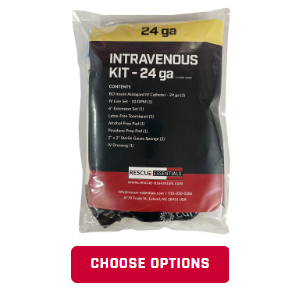 | ||
| Intravenous Kit | Saline Lock Kit | NIO Kit Complete, Adult |
Shop circulation components: https://www.rescue-essentials.com/iv-io-access-1/

Hypotension (systolic blood pressure under 90) and hypoxia (peripheral capillary oxygen saturation [SpO2] under 90) worsen secondary brain injury. Medical personnel identify mild traumatic brain injury (mTBI) using the Military Acute Concussion Evaluation (MACE). Non-medical personnel use the alert, verbal, pain, unresponsive (AVPU) scale. Hypothermia is a survivable cause of further injury and is defined as a whole body temperature below 95 F (35 C). Hypothermia, acidosis, and coagulopathy constitute the lethal triad in trauma patients. Hypothermia can occur secondary to blood loss, regardless of the ambient temperature. The Hypothermia Prevention and Management Kit (HPMK) is recommended by the CoTCCC for all casualties.
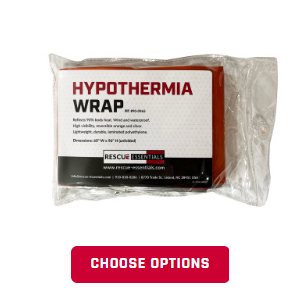 | 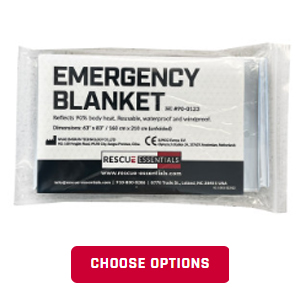 | 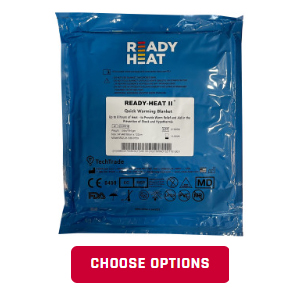 |
| Hypothermia Wrap | Emergency Blanket | Ready Heat Hypothermia Blanket |
Shop all hypothermia components: https://www.rescue-essentials.com/hypothermia/
